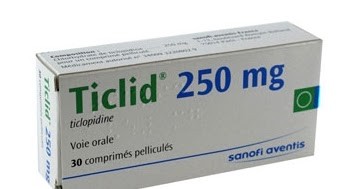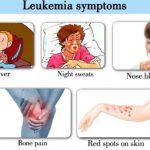
Contents
- 1 ticlopidine
- 1.1 Blood Clots (in the Leg)
- 1.2 Internal Bleeding
- 1.3 Stroke
- 1.4 Transient Ischemic Attack (TIA, Mini-Stroke)
- 1.5 Heart Attack (Myocardial Infarction)
- 1.6 Peripheral Vascular Disease
- 1.7 Claudication
- 1.8 Heart Attack Treatment
- 1.9 Fabry Disease
- 1.10 Hemolytic Uremic Syndrome
ticlopidine
Ticlopidine is an oral drug that inhibits platelet clumping and clot formation. It binds to the P2Y12 receptor on platelets, blocking adenosine diphosphate (ADP) activation. It belongs to the class of drugs called P2Y12 inhibitors. Other drugs in this class include clopidogrel (Plavix), ticagrelor (Brilinta), and prasugrel (Effient). Clopidogrel has a similar chemical structure and mode of action to ticlopidine. Blood clots in the brain’s arteries or pieces of clots that break off and lodge in brain blood vessels cause strokes. Heart attacks occur when blood clots obstruct a heart artery. Ticlopidine reduces the likelihood of clots and thus lowers the risk of stroke or heart attack. The FDA approved ticlopidine in October 1991.
Brand names for ticlopidine:
Ticlid (Discontinued brand in the US)
Generic availability:
Yes
Prescription required:
Uses of ticlopidine:
Ticlopidine is used to prevent strokes, transient ischemic attacks (TIAs), and blood clots in heart stents. Off-label uses include preventing heart attacks in individuals with unstable angina, those who have had previous heart attacks, in combination with aspirin for preventing blood clots in stents, and for intermittent claudication.
Side effects of ticlopidine:
Ticlopidine may cause:
Common side effects:
Ticlopidine has been associated with a severe reduction in white blood cell count and a condition called thrombotic thrombocytopenic purpura (TTP). TTP is a serious condition where blood clots form throughout the body, consuming platelets and leading to bleeding due to insufficient remaining platelets for normal clotting.
Dosage of ticlopidine:
The recommended dose is 250 mg twice daily with food for stroke prevention. For preventing blood clots in stents, a single 500 mg loading dose is administered several hours before stent placement, followed by 250 mg twice daily for 10-14 days after successful stent placement.
Drug interactions with ticlopidine:
The combination of ticlopidine with other drugs that promote bleeding, such as aspirin, warfarin (Coumadin), and heparin, increases the risk of bleeding. Ticlopidine may increase levels of duloxetine (Cymbalta) by reducing its breakdown in the liver, leading to duloxetine side effects. The combination may also increase bleeding risk because duloxetine can interfere with platelet function. Ticlopidine may increase pimozide (Orap) levels by reducing its breakdown in the liver, potentially causing abnormal heart rhythms.
Ticlopidine safety during pregnancy and breastfeeding:
Ticlopidine has not been adequately studied in pregnant women. Its secretion in human breast milk is unknown.
Additional information about ticlopidine:
Ticlopidine preparations:
Storage of ticlopidine:
Ticlopidine should be stored at room temperature, 15 to 30 C (59 to 86 F).
Summary:
Ticlopidine (Ticlid [discontinued brand in the US]) is prescribed to prevent strokes, TIAs, and blood clots in heart stents. Its off-label uses include preventing heart attacks in individuals with unstable angina or previous heart attacks, in combination with aspirin for preventing blood clots in stents, and for intermittent claudication. Safety information, including side effects, interactions, warnings, and precautions, should be reviewed before taking any medication.
Related Disease Conditions:
Blood Clots (in the Leg)
Blood clots can form in the heart, legs, arteries, veins, bladder, urinary tract, and uterus. Risk factors include high blood pressure, high cholesterol, diabetes, smoking, and family history. Symptoms and treatment depend on the clot’s location.
Internal Bleeding
Internal bleeding, a serious consequence of trauma, can be life-threatening and requires immediate medical attention. Learn about signs, causes, and treatment.
Stroke
A stroke occurs when blood supply to part of the brain is interrupted by a blood clot (ischemic) or bleeding (hemorrhagic). Symptoms may include weakness, numbness, double vision, confusion, difficulty speaking or understanding speech. Diagnosis of a stroke may involve a physical exam, imaging tests, neurological exam, and blood tests. Treatment may include clot-busting drugs, supportive care, and in some cases, neurosurgery. Reducing the risk of stroke involves managing high blood pressure, high cholesterol, diabetes, and quitting smoking.
Transient Ischemic Attack (TIA, Mini-Stroke)
When a portion of the brain loses blood supply due to a clot or embolus, a transient ischemic attack (TIA, mini-stroke) can occur. If symptoms persist, a stroke has likely taken place. Learn about symptoms, risk factors, and treatment for a TIA.
Heart Attack (Myocardial Infarction)
A heart attack happens when a blood clot completely blocks a coronary artery, cutting off blood supply to the heart muscle. Learn about warning signs, causes, complications, risk factors, and treatment.
Peripheral Vascular Disease
Peripheral vascular disease (PVD) refers to diseases of blood vessels (arteries and veins) outside of the heart and brain. Though there are many causes, the term peripheral vascular disease is commonly used to refer to peripheral artery disease (PAD). PAD develops when the arteries that supply blood to internal organs, arms, and legs become partially or completely blocked due to atherosclerosis. Symptoms include intermittent leg pain while walking, leg pain at rest, numbness in the legs or feet, and poor wound healing in the legs or feet. Treatment options include lifestyle changes, medication, angioplasty, and surgery.
Claudication
Intermittent claudication, or pain and cramping in the lower leg, is caused by inadequate blood flow to the leg muscles. This decreased oxygen delivery to the leg muscles is the result of narrowed arteries. Claudication is usually experienced during walking and decreases with rest. In severe cases, claudication may be present at rest. Exercise, medication, and surgery can be used to treat claudication.
Heart Attack Treatment
A heart attack leads to damage or death of part of the heart muscle due to a blood clot. The goal of heart attack treatment is to prevent or halt this heart muscle damage. Treatment includes medications, procedures, and surgeries that protect the heart muscle.
Fabry Disease
Fabry disease (Fabry’s disease, alpha-galactosidase-A) is a genetic disorder characterized by symptoms such as burning sensations in the hands, small raised reddish-purplish skin blemishes, fever, reduced sweating, and gastrointestinal difficulties. Fabry disease patients have an increased risk of heart attack, heart disease, kidney failure, and stroke. Symptoms can be managed with medication.
Hemolytic Uremic Syndrome
Hemolytic uremic syndrome (HUS) occurs when blood clots within the capillaries. Causes of HUS include E. coli, birth control pills, pneumonia, medications like chemotherapy, Ticlid, and quinine. Symptoms of HUS include gastroenteritis, abdominal cramping, vomiting, and bloody diarrhea. Diagnosis involves a medical history, physical examination, and medical tests. Treatment includes rest, fluids, and possible hospitalization for blood transfusion or complications due to kidney failure.


